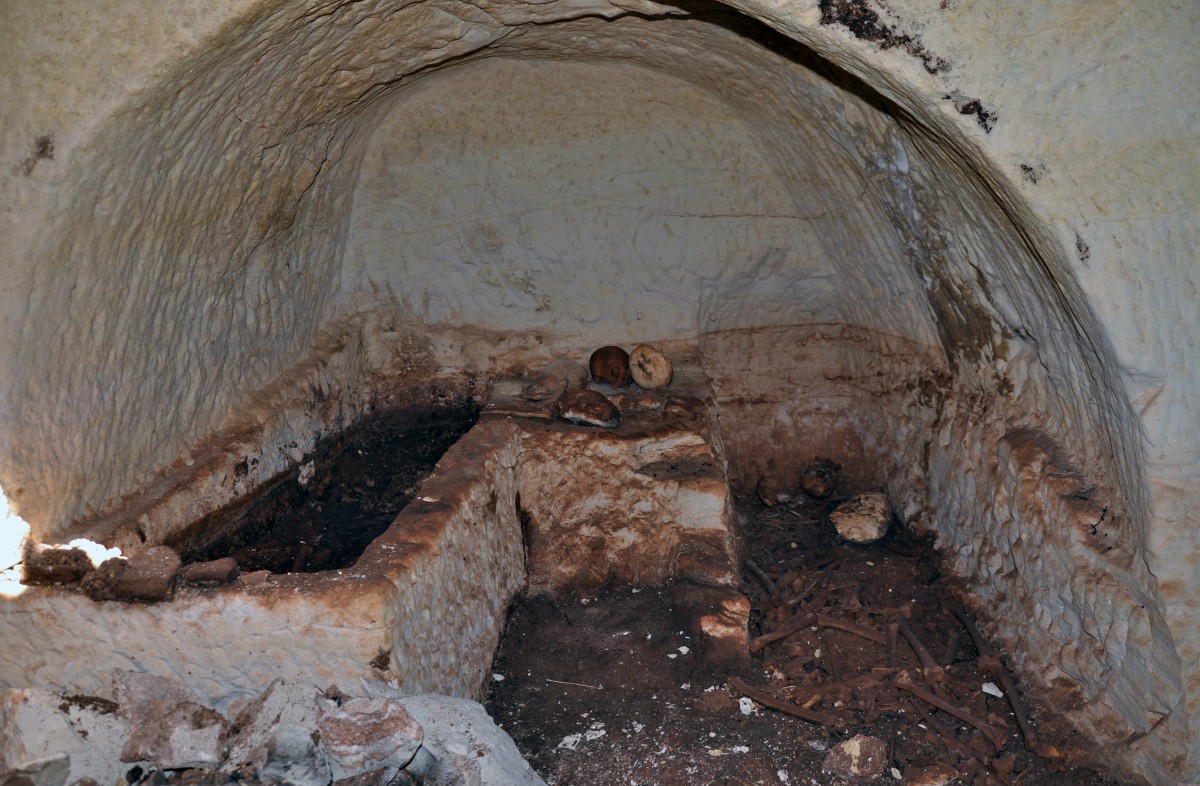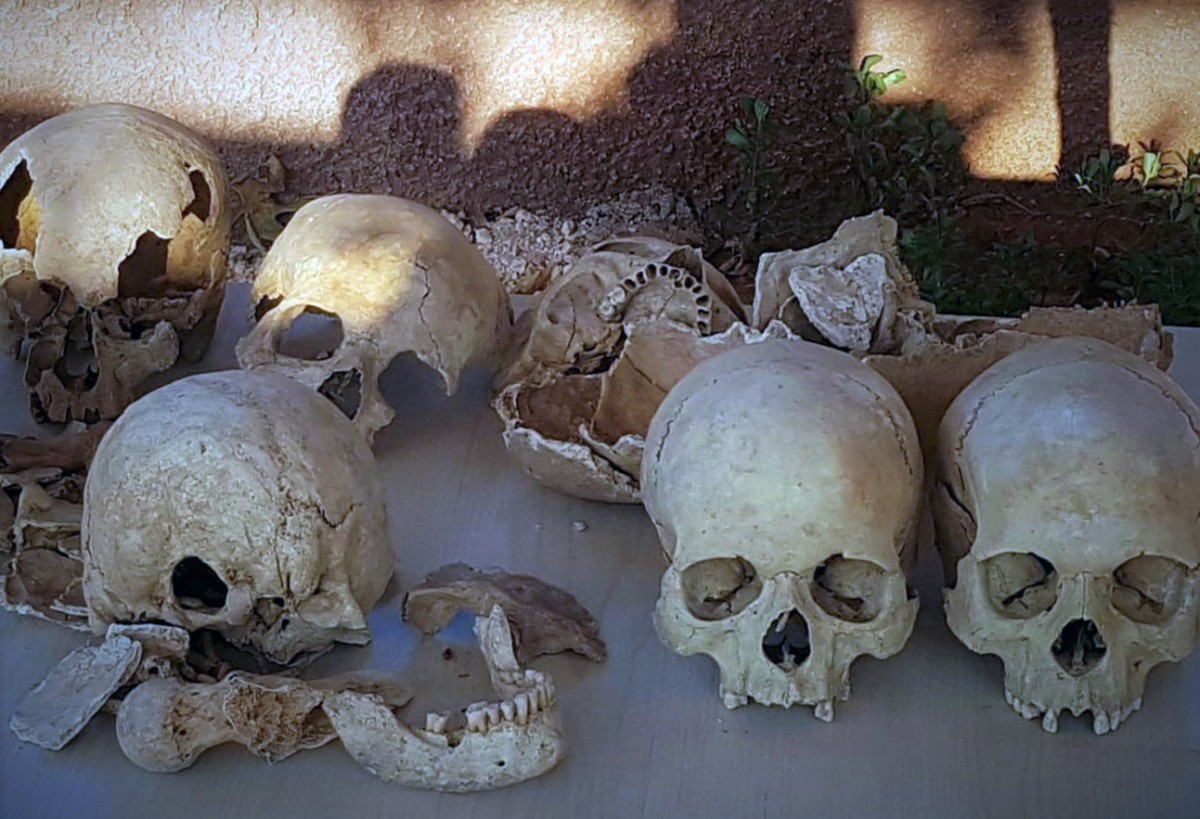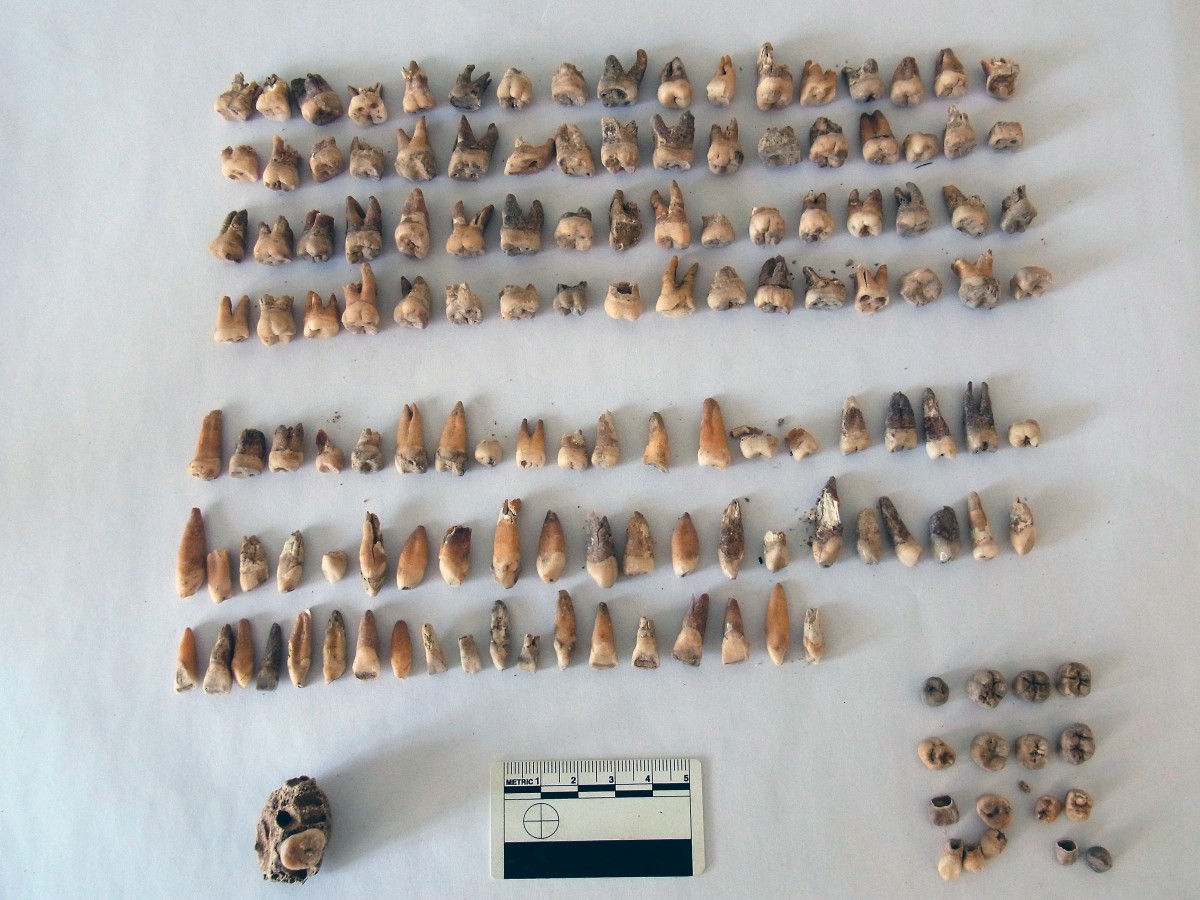
Good teeth and well fed: grave find provides insights into the everyday lives of the elite in antiquity
It was a surprising discovery that the archaeologists made. A team from the Asia Minor Research Centre at the Department of History at the University of Münster, working together with archaeologists from the Museum of Archaeology in the town of Gaziantep, uncovered the remains of 91 people from the time of imperial Rome in a rock-cut burial chamber in the ancient city of Doliche in south-eastern Turkey. Studies of the burial chamber and the bones provide insights into the everyday lives of members of the upper class of the time.
During construction work being carried out in 2017, in what is today the village of Dülük on the periphery of the ancient town of Doliche, workmen broke through the roof of the burial chamber. The archaeologists from Münster and staff from the relevant museum in Gaziantep were immediately summoned. “As soon as we descended into the chamber, we recognised that it was an enormous stroke of luck,” says archaeologist Dr. Michael Blömer from the Asia Minor Research Centre. “The bones of the dead were still there and were well-preserved. Although graverobbers had rummaged through the burials in ancient times, the grave was subsequently forgotten and covered over.” The grave, hewn out of the rock, consists of a large central chamber, measuring 3.5 by 4.2 metres, from which three niches with tombs branch off. In addition to the bones, the team also found fragments of glass vessels, oil lamps and gold jewellery. These all point to the grave being in use in the second and third centuries AD.
Examinations of the bones undertaken by Dr. George McGlynn, curator of the Bavarian State Collection for Anthropology and Palaeoanatomy in Munich, already provided the researchers with many insights into the life and death of the people who had been buried in the chamber. “The grave provides only twelve proper places for burial, which means that they were used several times over,” Michael Blömer explains. “There were also indications that, within the grave, skeletons were relocated in order to make space for new burials.” Most of the pieces of the skeletons were those of young men and women under the age of 40. The experts also retrieved the bones of children. “An exact analysis of the bones allows us to draw conclusions about the living conditions of those buried,” says George McGlynn. “The lack of any well-developed muscles and the delicate bone structures show that they had to do little or no physical work. There are also no indications of any diseases, malnutrition and vitamin deficiencies. What is particularly astonishing,” McGlynn adds, “is that the teeth show no traces of periodontitis or carious lesions.” Also, he adds, there are no indications of any disorders in development during childhood. So the results lead to the conclusion that it was a group of healthy people who led lives involving no hard work and who were not exposed to any other stress situations caused by environmental or physiological factors. The dead people were presumably members of the social elite.
However, there are still many unanswered questions. Why, for example, did so many members of a higher social class die at such a relatively young age? There are no indications of any injuries or of any violence done to them. The cause might have been medical factors such as fatal diseases or an epidemic which left no visible traces on the bones. What also needs to be clarified is whether there was any connection between the burials, and over what period of time they occurred. In order to find answers to these and other questions, there are plans in the coming months for DNA analyses, histological examinations and isotope analyses to be carried out. The aim is for a chemical examination of the conditions of the stable isotopes of carbon and nitrogen from the bone collagen to provide information on diet – for example, what role was played by vegetable and animal foods? Working together with palaeogeneticist Prof. Joachim Burger from the University of Mainz, next-generation DNA sequencing will be used to collect information on genetic material, kinship and individual characteristics such as the hair colour or eye colour, as well as on certain pathogens which might provide clues to an early death in the case of many people in the group. As regards this last question, microscopic analyses of the cementum in the teeth can help to identify physiological stress situations as a result of the occurrence of any disorders during growth.
This rare find of so many well-preserved skeletons provides an opportunity to gain information on important aspects of the everyday lives of the population of Doliche. “The interdisciplinary work being carried out on the contents of the burial chamber is of enormous scientific importance,” says Ancient Historian Prof. Engelbert Winter from the Asia Minor Research Centre, who is leading the excavation. “With specialists from the fields of Archaeology, Human Science and the Natural Sciences working together, this enables us to ask new questions and obtain a precise picture of life in an ancient city.”
Background:
The international excavation project in Doliche – led by Engelbert Winter from the Asia Minor Research Centre, in cooperation with the Turkish Ministry of Culture and Tourism – has been running since 1997. The ancient city of Doliche is situated in south-eastern Turkey, near the border with Syria. “The research work being done here for over 20 years – with funding by the German Research Foundation – represents an enrichment of our knowledge of the cultural, social and political developments in one of the most fascinating regions of the ancient world,” says Engelbert Winter.


